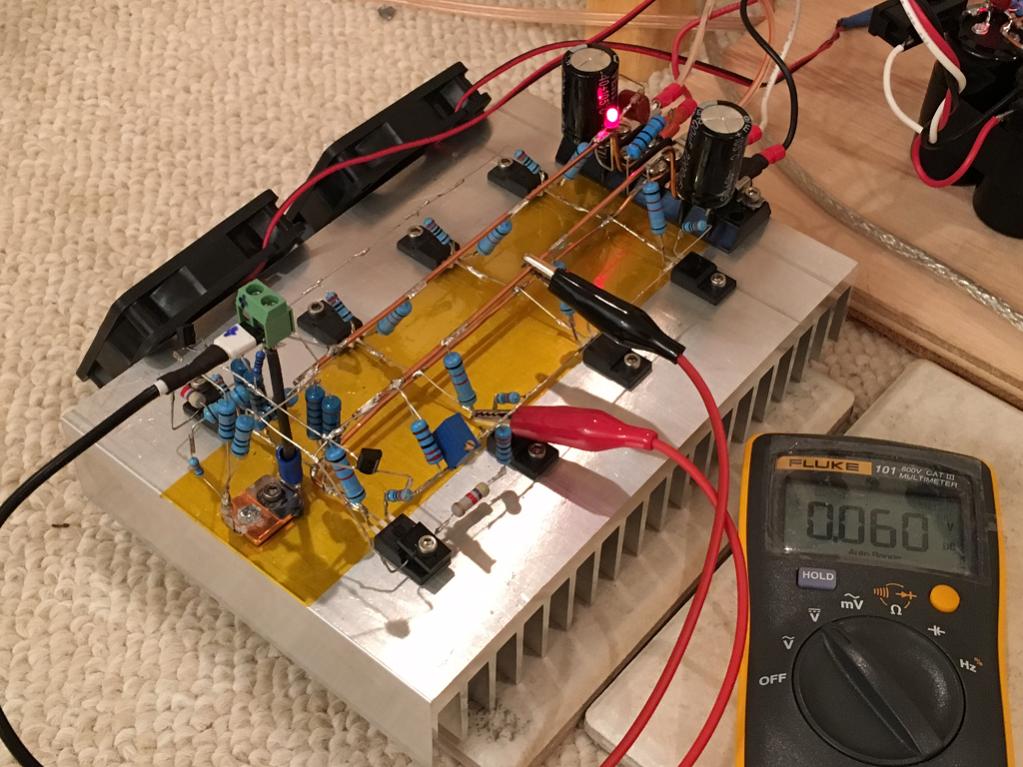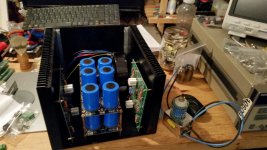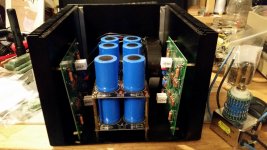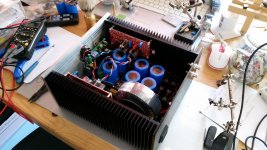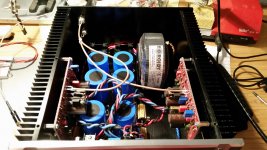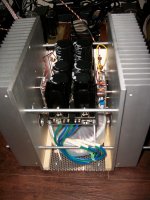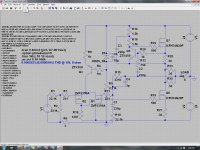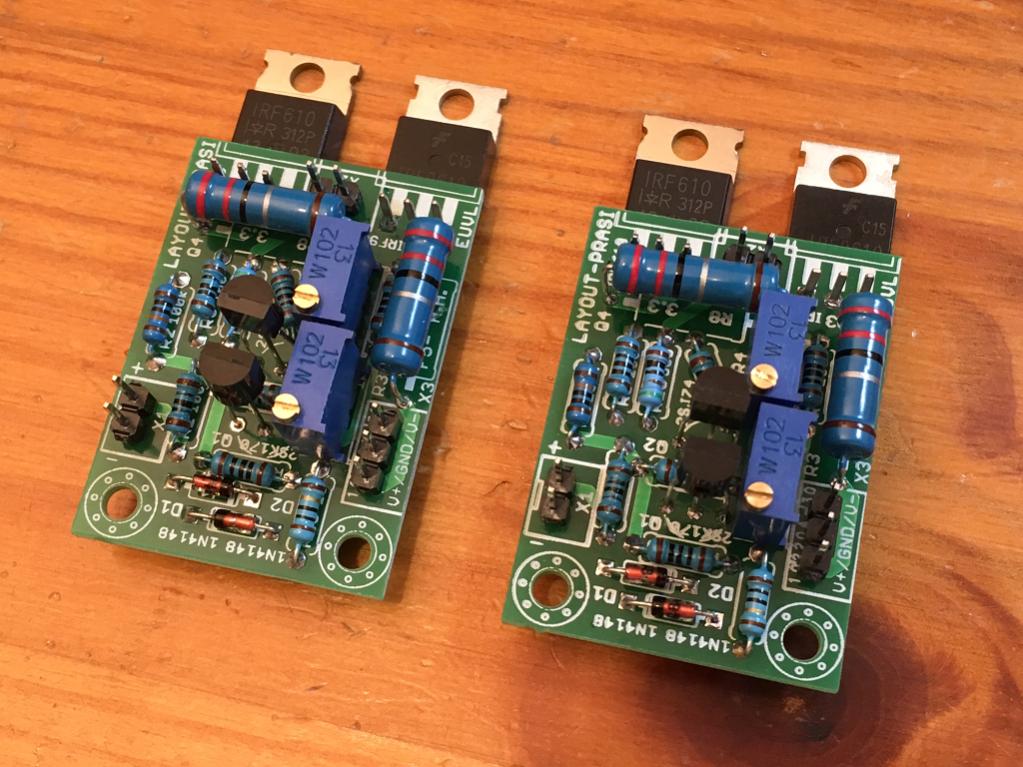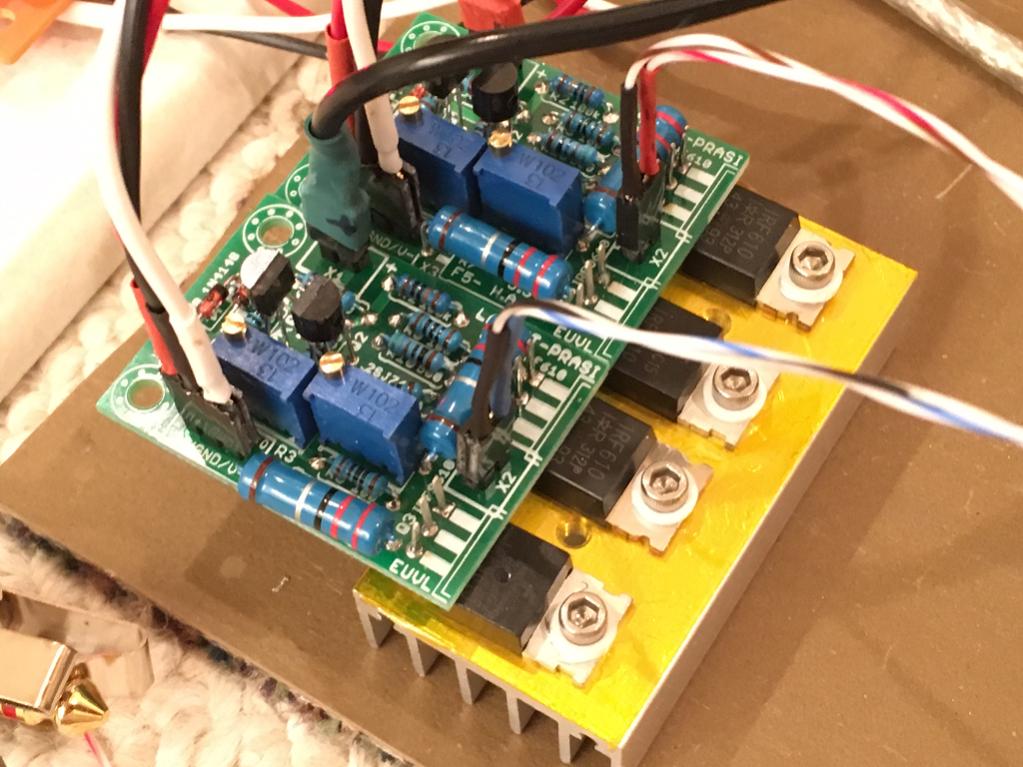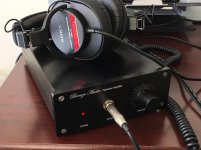1.6 amp. ?? You are braveheart also..)
I think it's 400mA per device, otherwise it'd be on fire.
You need a 250VA toroid for a head amp? Is this a HV electrostatic/planar head amp?
Btw, don't know what your bias current is but take a look at the Juma cap multiplier. I was using two 33mF per rail and still had 20mV ripple and with multiplier it's less than 1mV and only 1 of the 33mF is needed.
http://www.diyaudio.com/forums/solid-state/297921-jumas-easy-peasy-capacitance-multiplier.html
Btw, don't know what your bias current is but take a look at the Juma cap multiplier. I was using two 33mF per rail and still had 20mV ripple and with multiplier it's less than 1mV and only 1 of the 33mF is needed.
http://www.diyaudio.com/forums/solid-state/297921-jumas-easy-peasy-capacitance-multiplier.html
Last edited:
ALEPH J-X HA in the making.
250VA toroidy transformer, 12x 33000uF CRC PSU, curve traced semis. Slow but steady progress...
Nice! Like the cap stacks.
nash
The A J-X HA will be drawing about 1A per polarity per channel ~500mA bias), so a total of 2A per rail. The transformer has dual 15VAC supplies, so after rectification it will put out close to 20V DC. I'll be dropping 5V or so over some power resistors (CRC). 20V at 2A, times two, equals 80W in total. For class A that would demand a 160VA transformer. Since it's going to be a tight fit inside the chassis, I went for the 250VA transformer, hoping that the bigger core would contain the magnetic flux even better, resulting in weaker stray fields and thus less induced hum.
I've built an Aleph HA with the same bias conditions, and the A J-X HA is basically just twice the madness.
I was thinking about using the capacitance multipliers, haven't yet decided. With the A HA and my planar magnetic headphones I'm still not sure if I can reliably tell if the amp is switched on or off.
I've built an Aleph HA with the same bias conditions, and the A J-X HA is basically just twice the madness.
I was thinking about using the capacitance multipliers, haven't yet decided. With the A HA and my planar magnetic headphones I'm still not sure if I can reliably tell if the amp is switched on or off.
Attachments
A 120VA 0-15, 0-15Vac dual secondary transformer has a maximum continuous DC current after the capacitor input filter of 2Adc
If you operate this 120VA @ 50% of it's rated maximum continuous current, it will run cool.
i.e. the 120VA can supply 1A continuously.
That enough for two channels of dual polarity 500mA output stage bias.
If you operate this 120VA @ 50% of it's rated maximum continuous current, it will run cool.
i.e. the 120VA can supply 1A continuously.
That enough for two channels of dual polarity 500mA output stage bias.
Attached are images of my latest prototype Aleph build. I just couldn't wait for proper casing before trying it out! It uses ZVP3310 MOSFETs for the input differential pair and IXYS IXFH74N20P MOSFETs for the output devices. AC current gain from the CCS is set to 66% a la Aleph-3. Original target bias was 2A (as simulated in SPICE), but I actually get 1.8A with the part values shown. Still, this should be good for ~25W in 8-ohms and ~50W in 4-ohms. The amp cooks at ~50C according to my infrared thermometer on the ~10"x10"x2.25" heatsinks. Output DC offset is very stable, unlike my Aleph-mini build with ZVP3310 inputs.
It sounds excellent! Very detailed, powerful sound. Bass depth is superb.
It sounds excellent! Very detailed, powerful sound. Bass depth is superb.
Attachments
This channel p that you use is better at your taste than the J74?
I haven't yet tried the J74 since I don't have matched pairs of these devices. This latest amp was rather a "spare parts build" for me since I have acquired parts for several projects which have not (and likely will not) come to fruition. I happened to have matched ZVP3310 leftover from my previous Aleph-mini build and the IXFH74N20P purchased to make a scaled-down BAF2015, as well as all the other parts needed to complete an Aleph from my Zen v9 collection. So, I decided to throw them all together and see what I got since it would be a cheap project - no other parts left to purchase! I am curious about the sound of the J74, however, and took the front-end of my amp from the Aleph-J circuit with the thought that I might change to JFETs sometime in the future to compare the two.
What about the IXYS compared with IRFP240?
I can only compare with the memory of the sound of my Aleph-mini, which uses IRFP240 on the output, but runs at lower voltage and current. I think the sonic signature of the two amps is very similar, perhaps dominated by the ZVP3310. Both are, overall, pleasant and detailed, with some airiness. Both amps are rather spacious, but not to the degree of my 300b monoblocks. Obviously, the mini is a little "smaller" sounding, but I cannot say for sure whether this is caused by the different output devices or different operating conditions. The amp with the IXYS parts offers tremendous bass depth and force - better than what I remember from any of my other amps. I suppose the amp really controls my speakers well. One advantage of the IXYS parts (for me) was that I could use a single pair per channel, while I would need at least a quad per channel of the IRFP240. This allowed me to use my spare heatsinks without drilling and tapping extra holes. At any rate, I was curious to try the IXYS parts in something, since they are a smaller brother of the IXFN140N20P recommended by Pass for the BAF2015 amp. They did not disappoint.
Overall, the amp turned out well, despite its spare-parts nature. The only flaw so far is a rather dramatic turn-off thump. It was rather alarming to see the speaker cones more as they did plus make the dreaded whomp. The whole event lasts a second or so, which is probably safe for my speakers, but still disconcerting. DC protection may be in order...
Last edited:
Very neat X!
What is the power source?
Right now I am using an oversized 100VA 15VAC toroidal trafo into a CRCRC with 2200uF//0.47R//2200uF//0.47R//2200uF and LM7x15 voltage regulators per rail (4 rails as monoblocks).
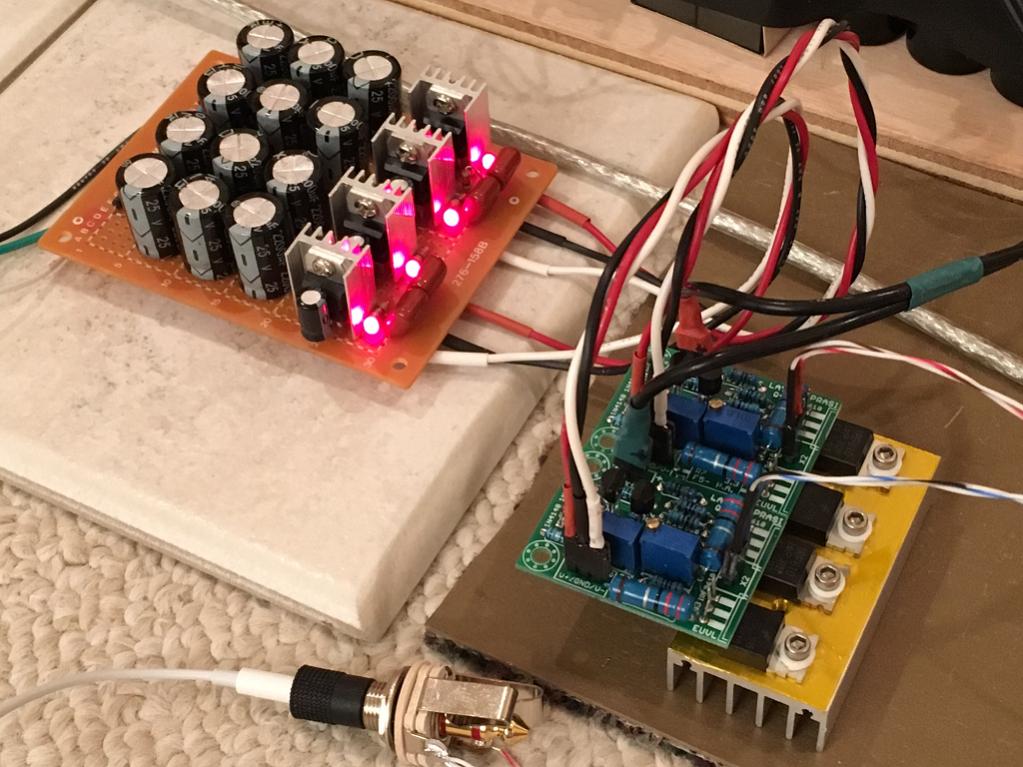
Bias is 100mA so each amp is dissipating about 3w. The small heatsink is for testing only - gets kind of hot. Perfect for one amp but not stereo. I am using fan to augment.
Hey X,
The build using the boards look neat and tidy
Regards,
Thanks! Have you started your build of the F5 HA yet?
Thanks! Have you started your build of the F5 HA yet?
Not yet. Following your suggestions, I ordered a bunch of stuffs and am waiting for them. Plan to start the build during X'mas when I have some time off.
Regards,
F5HA Completed and Listening Now
Really enjoying this head amp - and works so nicely with a case and volume knob. I never had a volume knob on any amp I built before. Sounds wonderful and Dave Brubeck is coming trough very nicely. Tested with all different genre's and picking up some detail I never heard before.
Too bad this is going to be a gift for a friend - so I get to enjoy for a few more days during the "burn-in" period.
Just a note that a small class A headphone amp doesn't need fins on the case. The case wall serves as a fine heatsink as it is all aluminum. Box is barely (almost not noticeable) warm to touch.
This volume pot is an Alps metal body cheapie one - but is silky smooth and no gritty hash sound when changing volume. Not sure why so many people complain about volume pots - this is basic and works exceptionally well as part of crossfeed input filter to 100k input impedance JFETs.
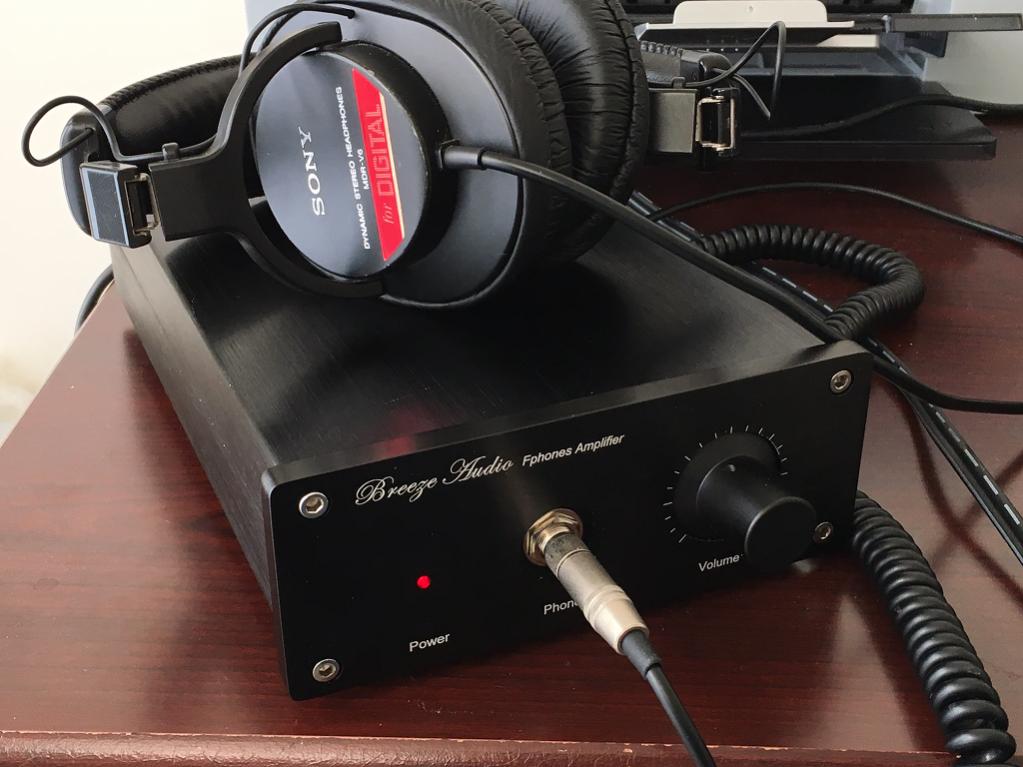
The insides in case you have not seen it:
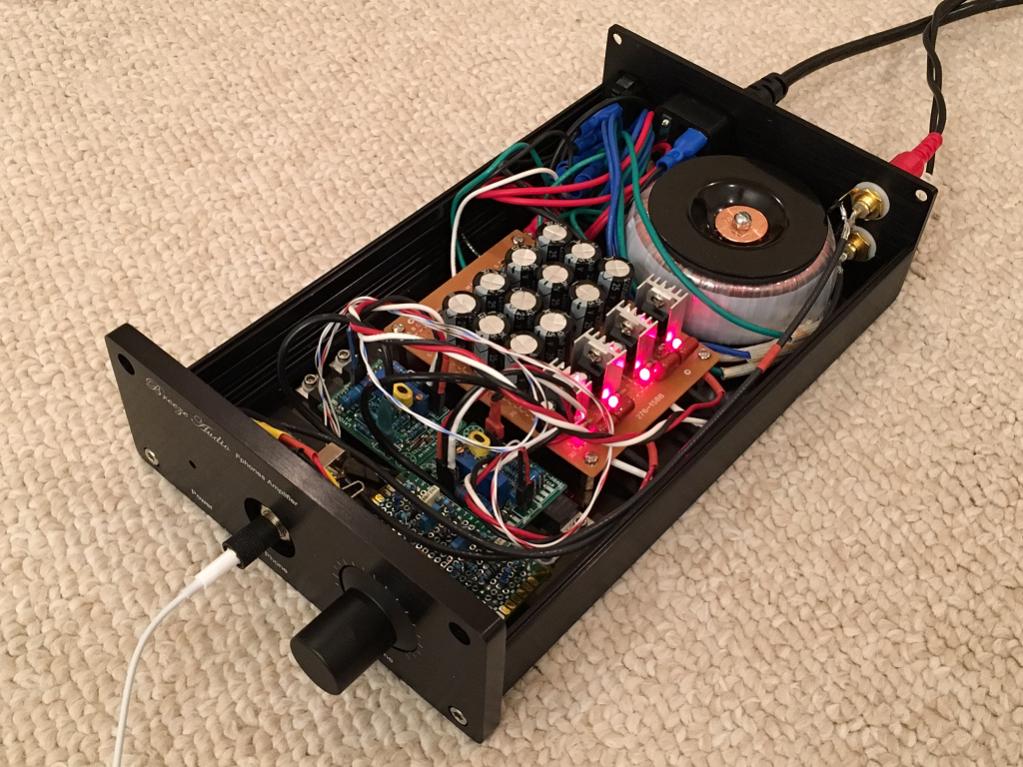
Really enjoying this head amp - and works so nicely with a case and volume knob. I never had a volume knob on any amp I built before. Sounds wonderful and Dave Brubeck is coming trough very nicely. Tested with all different genre's and picking up some detail I never heard before.
Too bad this is going to be a gift for a friend - so I get to enjoy for a few more days during the "burn-in" period.
Just a note that a small class A headphone amp doesn't need fins on the case. The case wall serves as a fine heatsink as it is all aluminum. Box is barely (almost not noticeable) warm to touch.
This volume pot is an Alps metal body cheapie one - but is silky smooth and no gritty hash sound when changing volume. Not sure why so many people complain about volume pots - this is basic and works exceptionally well as part of crossfeed input filter to 100k input impedance JFETs.

The insides in case you have not seen it:

Attachments
Last edited:
- Home
- Amplifiers
- Pass Labs
- Pictures of your diy Pass amplifier
